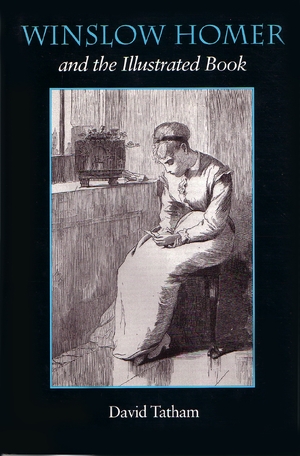"This exquisitely crafted narrative thoroughly details the artist’s creative process inspired by England’s North East region. Beautifully written, Tatham’s extensive research provides a thought- provoking and convincing thesis that Homer’s Cullercoats paintings were not transitional pieces rather, they formed an independent body of work praised in their day, solidifying the artist’s reputation.”"—Nancy Siegel, Towson University
"Tatham’s luminous prose, historical insights and wise inferences make this book indispensable to all readers interested in Homer, or in American art."—William R. Cross, curator of Homer at the Beach
"Tatham’s depiction of Cullercoats assures the place these understudied pictures should hold in the artist’s oeuvre."—Judith Walsh, Professor Emerita, Buffalo State College, SUNY
"Tatham is a meticulous scholar who uses his keen eye and very perceptive sense of what makes these paintings so compelling and significant to provide a truly fresh and engaging read."—Sarah Burns, Indiana University Bloomington
"David Tatham presents a well- researched and well-written assessment of Homer’s work during this 18 month period (1881–1882). . . . Homer was an expressive artistic powerhouse, and the Cullercoats work proves his versatility."—New York Journal of Books
"Tatham organizes the book into studies of groups of paintings bracketed by an introduction to England’s North East and what Homer did after returning to America in 1882. . . . What has always made Homer such a remarkable artist is his virtuoso touch with atmospherics: lavender-green dusk, tempestuous waves, limpid sunlight, scudding clouds, and, in Cullercoats, the “Scotch mists”."—Leann Davis Alspaugh, The Hopkins Review
Description
When Winslow Homer sailed to England in March of 1881, he was already well established as a leading member of his generation of American artists. Critics often referred to him as the “most American of American artists,” combining praise with the implication that his work was provincial compared to that of his more European-trained American contemporaries. However, upon his return, after a year and a half spent in the seaside village of Cullercoats, Homer’s work garnered rave reviews and gained a new appreciation among art dealers. In this book, Tatham’s detailed account of Homer’s time in Cullercoats offers a perceptive reappraisal of both the village’s influence on his work and the paintings themselves.
In his Cullercoats paintings, Homer took as his main subject the lives and labors of the village’s women and their strong sense of community. In many ways, these paintings stand among Homer’s most original and perceptive depictions of women, but they also display his masterly uses of watercolor. The Cullercoats paintings show Homer in a new light, and Tatham’s revelatory account provides the long-overdue attention they deserve.
About the Author
David Tatham is professor emeritus of fine arts at Syracuse University. His books on nineteenth-century art include Winslow Homer and the Pictorial Press (winner of the Ewell L. Newman award), Winslow Homer and the Illustrated Book, and Winslow Homer in London.
Related Interest
7 x 10, 110 pages, 20 color, 1 black and white illustrations, 2 maps
June 2021




